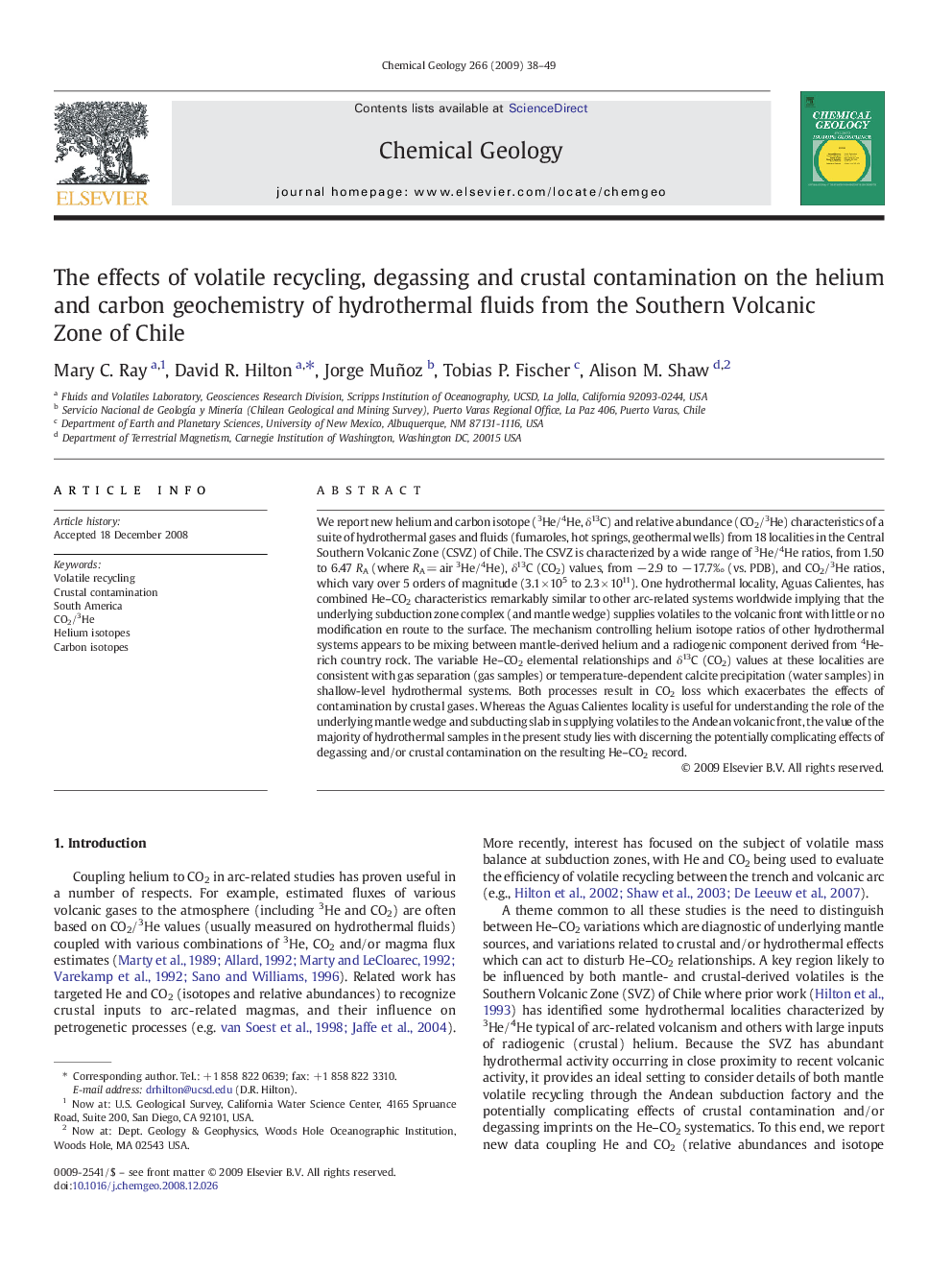| Article ID | Journal | Published Year | Pages | File Type |
|---|---|---|---|---|
| 4700283 | Chemical Geology | 2009 | 12 Pages |
We report new helium and carbon isotope (3He/4He, δ13C) and relative abundance (CO2/3He) characteristics of a suite of hydrothermal gases and fluids (fumaroles, hot springs, geothermal wells) from 18 localities in the Central Southern Volcanic Zone (CSVZ) of Chile. The CSVZ is characterized by a wide range of 3He/4He ratios, from 1.50 to 6.47 RA (where RA = air 3He/4He), δ13C (CO2) values, from − 2.9 to − 17.7‰ (vs. PDB), and CO2/3He ratios, which vary over 5 orders of magnitude (3.1 × 105 to 2.3 × 1011). One hydrothermal locality, Aguas Calientes, has combined He–CO2 characteristics remarkably similar to other arc-related systems worldwide implying that the underlying subduction zone complex (and mantle wedge) supplies volatiles to the volcanic front with little or no modification en route to the surface. The mechanism controlling helium isotope ratios of other hydrothermal systems appears to be mixing between mantle-derived helium and a radiogenic component derived from 4He-rich country rock. The variable He–CO2 elemental relationships and δ13C (CO2) values at these localities are consistent with gas separation (gas samples) or temperature-dependent calcite precipitation (water samples) in shallow-level hydrothermal systems. Both processes result in CO2 loss which exacerbates the effects of contamination by crustal gases. Whereas the Aguas Calientes locality is useful for understanding the role of the underlying mantle wedge and subducting slab in supplying volatiles to the Andean volcanic front, the value of the majority of hydrothermal samples in the present study lies with discerning the potentially complicating effects of degassing and/or crustal contamination on the resulting He–CO2 record.
